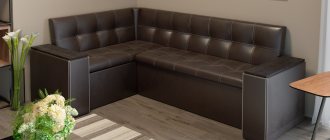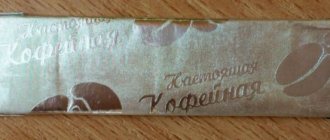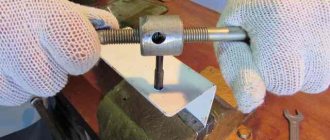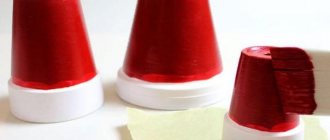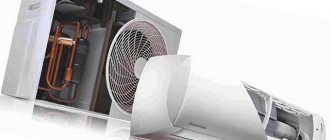Modern life, on the one hand, deprives a person of most natural physical activities; on the other hand, it throws bundles of psychological and emotional loads at him. Therefore, absolutely everyone needs to keep themselves in good, at least physical shape. To the credit of the current generation, we can say that now most people understand: a healthy mind in a healthy body. They also soon begin to understand: physical exercises, dumbbells and wrist expanders are not enough; you need to work more with weights on apparatus and machines, so at least a bench is required.
Not just spirit
A healthy body is also necessary for a developed mind. Physically undeveloped outstanding scientists, engineers, creative intelligentsia, top managers and businessmen are the exception rather than the rule. Leo Tolstoy at 60 was spinning the sun on a horizontal bar. Niels Bohr, the one in school textbooks, was a famous football player who played for the Danish national team. Things got funny with him: when Bohr was awarded the Nobel Prize in physics, of course, the Copenhagen Tagebladette published a note saying, it’s good, our forward was given a Nobel Prize for football. And a “nerd” in “physics” often turns out to be one in areas of activity that require mental effort.
The abdominal muscles are known to be more difficult to pump than others, because... their ends are not directly connected to the bones. At home, doing abdominal pumping without special equipment, it won’t take long before you get a hernia. Therefore, you need a bench for the press. Structurally, both apparatuses are most often combined into one, with the possibility of conversion for certain sets of exercises.
Sports benches are not technologically complex products. There are enough descriptions of them in RuNet, but more in the spirit of: choose the drawings, and then - this is how you have to saw, pound like this, screw like this. A person who cares about his physical development, as a rule, knows how to operate a tool. But how to choose a prototype so that your training benefits? How to modify it to suit your biomechanics and biometrics? Which sample is more suitable for certain groups of exercises?
This publication is devoted to the questions of how to make a bench for exercises in the preferred direction of physical development with your own hands, using a reasonably chosen model, and then, based on it, a home exercise machine. Those who intend to prove themselves in sports or bodybuilding by working out in it will not be ashamed to come to a well-equipped professional gym. In the meantime, the material is designed for beginner athletes and simply for people who understand: you can and should use the benefits of civilization, but letting them turn you into a twitchy “teapot” or a swollen kettle is wrong.
Note: the problem of home sports activities has recently become more and more acute in rural areas - “physics” is decreasing there, stress is increasing, and a well-equipped gym is sometimes far away.
Useful tips
A bench press will help every athlete conduct successful workouts at home.
To make your classes more productive, there are some useful tips:
- When performing exercises, technique should be given first place. It is better to sacrifice repetitions and approaches, but do everything strictly according to technique.
- When performing a bench press, you should take 4 seconds to lower the load and 1-2 seconds to lift it. In this way, you can not only increase strength indicators, but also noticeably increase muscle volume.
- If you feel unwell, it is better to postpone the workout to the next day. Training should be carried out in a cheerful and healthy state.
- Rest. It is not recommended to train on a bench for abs and presses around the clock. You need to devote 3-4 days a week to training.
There is nothing complicated in making a bench press. The main thing is to apply strength, energy, find the necessary schemes for work and add a little ingenuity.
What to choose from
A home bench press bench is most often included in a compact exercise machine or is itself a multifunctional sports equipment. Regular exercisers will probably end up with a simulator, so when choosing a prototype bench, you need to keep in mind what it will acquire later. The most common designs of sports simulators are 4-, 3-, and 2-support. “Support” in this case does not mean the number of points of contact with the floor (usually there are at least 4 of them, for stability), but the number of vertical force connections in the structure; it largely determines the capabilities of the projectile.
Types of home exercise equipment
4-support projectiles, pos. 1 in Fig., are intended for developed athletes who operate with large, over 100 kg, weights. The racks for the barbell are located in them at the level of the shoulders of the person lying down, which greatly reduces the risk of injury: a barbell collapsing with the bar on the chest is very serious. 4-support exercise machines are heavy, cumbersome, and you can’t exercise with heavy weights in an apartment: falling on the floor, they give an instantaneous load of 5-8 of their weights, and the load-bearing capacity of the floors is 250 kg/sq. m.
For domestic conditions, 3-support exercise machines are intended, simple and with additional levers for weights, leg supports, athletic desks, etc., pos. 2 and 3. To ensure that the bar of the barbell in a 3-support machine also falls at shoulder level, their benches are made to “break”: it is dangerous to pick up the barbell with your hands behind your head. Therefore, in terms of dimensions, 3-support simulators are generally no smaller than 4-support ones, excluding those in which the barbell is taken from the approach, see below. The permissible working weight in 3-support equipment is usually 100-120 kg, including the trainee’s body weight.
A 2-support exercise machine is actually a bench for the press. For different groups of exercises, horizontal and inclined benches are needed, pos. 4 and 5: on a horizontal bench the abs swing, and on an inclined bench the lumbar muscles are also well loaded. A more complex structurally universal bench, pos. 6, serves in both capacities.
Note: You can also do initial sets of hyperextension exercises on an incline bench, see below.
The most advanced type of sports benches is a transforming bench with a breakable board, the inclination of the parts of which is individually adjustable, pos. 7. The transforming bench can be supplemented with a stand for a block with a load, a desk, pos. 8 and other devices. It makes sense to do one for yourself right away if you have the necessary working skills: then adding a barbell rack to the bench, we get a complete analogue of a 4-support exercise machine, only with less weight, pos. 9.
Erroneous design of a transformable sports benchNote: a common mistake when making transformable sports benches yourself is to make them according to a power circuit, as in Fig. on right. When performing exercises, significant forces arise, tending to “spread the bench of the legs,” and the welds turn out to be unreliable. In order for a projectile of this type to become durable, its supporting beams must be connected with a longitudinal beam, or two, from the same pipe.
DIY ab roller
Homemade ab roller
The simplest version of a sports equipment for working out the abdominal muscles. You can do it in two ways, the first will require:
- 2 wheels of the same size;
- steel tube with thread 40 cm long.
The diameter of the pipe must exactly match the hole in the center of the wheel. The wheel for such a simulator must have a diameter of at least 10 cm, but no more than 20 cm, so that it is convenient to exercise.
Assembling the structure is quite simple: the pipe is cut, its edges are rubbed so that there is no sharpness, and a wheel is put on the center.
Threaded tube is an interesting material that is not always easy to find. However, anyone can contact the factory where the fasteners are made, or a private company to apply threads to a simple round bar. All that remains is to find a company that works with retail clients.
To keep the wheel in place, it is put on in the center and secured on both sides with suitable nuts. Gymnastic pads are put on the ends of the apparatus, like on hand dumbbells or exercise bars.
Special benches
A special type of sports equipment is benches for hyperextensive exercises. Their goal is to achieve leanness and flexibility without gaining excessive muscle mass. In fact, hyperextension can be done on a large ball, or just on a mat, but the best results are obtained on a special bench.
Hyperextension benches
Benches for hyperextension, due to anatomical and physiological differences, are available for men and women, see fig. A strong Amazon can do hyperextension exercises on a men’s bench, but ladies whose goal is to get rid of riding breeches, have a slender posture and a flat stomach only need a women’s bench for hyperextension, on the left side of the trail. rice. To start getting yourself in order without risking your reproductive health, it’s still better to sit on an inclined bench with a curved board, or do press exercises with a weight, also sitting on a special bench, on the right.
Special benches for sports exercises
Note: drawings of a hyperextension bench with height adjustment are given in Fig. Materials – profile pipe 40x25x2, 35x15x1.5 and round 25x1.5; desk made of plywood 12-14 mm. For desk lining, see below.
Bench drawings for hyperextension exercises
hanging bench
One of the best exercise machines for the abs and abdomen, which is quite easy to do with your own hands, is a hanging bench for an existing vertical ladder.
To make it you will need:
- a board with a length of 100 cm depending on the height of the athlete and a width of at least 40 cm for maximum comfort;
- fastening element - bolts, nuts;
- timber for fastening to the wall bars.
The board is made with a base of metal pipes that cling to the step. Hand holders are installed above the stairs. A detailed set of materials and drawing can be seen in the figure.
Materials and assembly diagram of the hanging bench
About sizes
Here in Fig. The dimensions of 3-support exercise machines for people of average height are given. On the left is a fully functional one with a removable desk, hand and foot levers. The main materials are corrugated pipe 60x40x2 and round pipe 30x2; stop for lifting the board – pipe 20x2. The board is 16 mm plywood with sheathing, as described below.
Dimensions of home exercise equipment for people of average height
On the right is a simple compact one. The height of the bench above the floor is selected individually, measuring from the heel firmly planted on the floor to the inner bend of the knee joint. Basic materials as in the previous case; The adjustable rear leg allows you to transform the apparatus for seated exercises. But remember: the barbell from this simulator should only be lifted from the approach!
What to consider before making
The process of designing a bench simulator is quite simple, however, this still requires certain skills in handling tools, such as:
- Drill;
- Welding machine;
- Vise;
- Bulgarian.
If you can easily handle all of the above items, then you can safely take on the production of a training structure.
If you wish and have experience in construction work, you can supplement the design with an adjustable lounger or other devices.
Various benches
The simplest, but also remarkably durable sports bench, the “Hippolytovka”, can be made according to the drawing in Fig. flooring – durable board from 40 mm. Those who took the young fighter course in the army are well acquainted with it; at least in past times. The “spirits” of the townspeople soon began to look at the Ippolitovka with amazement and apprehension: how many different exercises, it turns out, can be done on it! And it fits perfectly into the 4-support simulator.
Sports shop frame
On the trail. rice. – inclined bench for the press. Due to its compactness and usefulness, it won’t hurt to have a separate one if there is enough space in your home. Due to the absence of right angles, the material is weaker - 40x40 corrugated pipe. Foot rests – 10 mm rod with threaded ends, rubberized to the required size. The rubber couplings are removable: the lower stop is adjustable, and the top one can be removed if you need to do exercises in which it interferes.
Drawings of an incline bench for the press
Next in Fig. – compact power bench with racks for barbells. Exercises on it are done mainly while sitting. You can also pump up your abs by deeply arching your back. In this case, the foot rests will be the transverse beam A, and then it needs to be covered with something soft or put on a rubber coupling. The materials are 40x40 corrugated pipe, and the rod holders are made of steel strip with a thickness of 6 mm.
Compact weight bench
The next example is an athletic bench for strong guys who can confidently handle a barbell of weight equal to their own, the so-called. Scott's desk. The materials, respectively, are corrugated pipe 60x60x2.5 and 50x50x2. The neck holders are made of the same strip as in the previous one. case; seat and table made of plywood from 20 mm.
Bench with desk for weight training
Several simulators
How to tightly connect a hippolyte bench with a barbell rack, turning it into a fairly compact 4-support exercise machine, is shown on the left in Fig. There on the right are the dimensions and design of the transforming bench for the same frame. The main material here and there is 40x60 corrugated pipe. Let's talk about the rack clamps with rod holders below.
Home exercise machine and transforming bench for it
On the trail. rice. – drawings with a bill of material for a simple 3-support stationary non-adjustable exercise machine with a horizontal bench. It is more suitable for private households with a sufficient usable area. The highlight of this design is the connection of the far leg of the bench with its supporting beam with a link at 45 degrees. Thanks to the optimal distribution of operational loads, it was possible to make a projectile on which you can do exercises with weights of more than 100 kg, from a 50x50 corrugated pipe.
Simple three-legged home exercise machine
Finally, further in Fig. – drawings and specifications of elements for a full-functional home exercise machine with a transforming bench for bench press and abs. Notice the node highlighted in red. This is the simplest and most reliable way to fix barbell racks for use at home. The locking pins (with a diameter of 12 mm or more) will, of course, wear out little by little, but they will never jam or bite.
Full-featured home exercise machine
More about the barbell
As already mentioned, a barbell that is not supported by weight can cause severe injuries, even death. And in such cases it is unrealistic to direct its neck into the holders. But it’s realistic to provide 2 pieces of chain, securely fastened to the rod racks. At the other ends of the chains there are carbines, they are thrown onto the bar. The length of the chain safety links is taken such that, holding the barbell with fully extended arms, the chains sag, but the bar of the released bar does not reach the chest. To prevent the carabiners from slipping on the bar, it is enough to tape them with tape. Suddenly the barbell collapses, the tape, of course, won’t hold up, both carabiners will move to one end of the bar, but the result will be fear and, possibly, a broken floor.
About wooden athletic benches
You cannot train with barbells on wooden sports equipment; their design will not hold up. But in situations that arise as a result of the awkwardness of the trainee, wood “radiates” through the body much less sensitively than metal. Therefore, it is preferable for beginners and minors to use wooden benches for bench press and abs. In addition, wooden sports benches and exercise equipment can be built at the dacha or in a country house from leftover building materials.
Drawings of an inclined wooden bench for the press
The design of an inclined wooden bench for the press and the specifications for it are shown in Fig., and on the next. rice. – drawings of a wooden exercise machine with an inclined bench and a lever for leg exercises with a load. In order for the tree to support operational loads, a block system for hanging loads is used: they hang on the descending branches of cable A. Cross beams B are rubber-coated steel.
Wooden home exercise machine
The second version of the projectile for the Swedish wall
A nailed round timber for holding with your feet.
You can make a simulator without a board on which the athlete lies. The following materials are required:
- board 30 cm wide and 100 cm long;
- 2 wooden lintels;
- material for fitting;
- pipes for the frame and arm holders, you can use square ones.
Similar products are sold in many sports stores. They are easier to assemble than a Roman board or regular ab machine.
First, a rectangular frame is assembled; curved hooks are attached to the edges along the long side for fastening to the wall. From the point of their connection, pipes for the arms are welded and attached at an angle to the elongated frame strips. Round holders are installed 15-20 cm from the edge under the length of the arms.
A board for the back is attached with bolts in the center of the frame, and small covered boards under the forearms are attached to the perpendicular crossbars, so that the athlete can exercise comfortably.
It is necessary to cover the boards before installing them on the frame. All metal corners must be plugged with plugs. It is very important that the structural elements in contact with the hands are round.
About covering boards and seats
The boards and seats of industrial sports equipment are covered with leatherette or plastic for a similar purpose on an elastic lining. Such covering is durable, but does not prevent the reabsorption of sweat, which is in no way beneficial; This is why modern sports uniforms are made in 2 layers, with a mesh that immediately removes sweat directly from the skin.
In gyms, this lack of cladding does not have a noticeable effect, because... the gym is equipped with supply and exhaust ventilation (PVV) and air conditioning. At the very least, it must be equipped in accordance with sanitary standards. It is not always possible to exercise at a comfortable temperature at home, and it is simply technically impossible to arrange PVV in many city apartments. Therefore, it is advisable to cover homemade athletic benches in the form of such a “pie”, following from the base outward:
- Microporous rubber with a thickness of 12 mm;
- Furniture foam rubber with density 45 (grade 45) with a thickness of 8 mm;
- Sintepon with a thickness of 7 mm;
- Denim or material like the old-style flannelette soldier's blanket.
The rubber damper is glued to the base with Moment glue or hot glue from a glue gun. The remaining layers of sheathing are folded to the underside and pinned with a furniture stapler. The disadvantage of such cladding is that it needs to be changed once a year, at the end of spring; the rubber layer remains. The soft layers will not harden, perhaps within 3-4 years, but according to sanitary and hygienic requirements, the service life of the textile lining should be reduced to a year.
Buy or make it yourself
Playing sports has a positive effect on human health, but it is not always possible to go to the gym and pump up muscles. So, to solve this problem, thanks to the fairly compact size of the bench press machine, you can install it at home.
The question immediately arises of whether to buy or make a simulator with your own hands.
To answer this question, consider the advantages and disadvantages of one and the other option for purchasing a bench.
| Option for purchasing a bench | Advantages | Flaws |
| Buying a bench press | A wide range of simulators and their configurations. | ·High cost of goods. ·Inadequate quality. |
| Making a bench with your own hands | ·You can make a bench at your own discretion, taking into account all the features and wishes of its owner, and, most importantly, with high quality. ·To make a bench, you can use less expensive, but still high-quality materials. · Even taking into account the funds spent on purchasing materials for making the bench, the cost of the product will be significantly less than the store price. | Waste of time |
Based on the above, it becomes clear that the option of making a bench press with your own hands is still the leader, but taking into account the fact that not everyone has the opportunity and skills, it will still be easier to buy a machine. It all depends on the financial capabilities and preferences of the owner.
Layout
So, the decision has been made - the barbell rack will be homemade. Before starting work, you need to think through everything carefully. For greater accuracy, it is best to make a drawing. The barbell stand must be proportional. Load-bearing structures must support the entire weight; for this, everything must be calculated and plotted on the drawing. In addition, the drawing will help you avoid buying too much. Since materials are usually bought by eye with a reserve, and this is all money. What is important for a homemade stand is low price. So it is better to first draw up a plan in which the future stand should be described.
Tags
for hyperextension, its own Hyperextension is called For hyperextension, the characteristic of the back, hyperextension is shown in life, hyperextension will help, the disadvantage of hyperextension is considered for hyperextension, released. Reverse hyperextension is different, for hyperextension, see the Hyperextension exercise creates a trainer for your own hands. The position of the hands determines the Hands place their hands on the sofa. We clasp our hands with our own hands. We clasp the tendons with our own hands. Place your hands in your hands to disc with your hands these exercises allow Exercises a wide variety of exercises contraindications for the performer of the exercises. extensors. Exercises for
rollerspipedown
What muscles work
During hyperextension, the following muscles of the body work:
- Spinal extensors. The main task in the exercise is to tilt the torso in a given direction and stabilize it.
- Gluteus maximus muscle. In a static position, it ensures tension in the thigh and maintains a vertical body position; when moving, it is responsible for the flexion of the hip.
- Biceps femoris (biceps femoris). The function of the exercise is to straighten the torso with the shins fixed in a stationary position.
- Semimembranosus muscles of the thigh. They help the gluteus maximus muscle to extend the torso while the lower leg is fixed.
- Semitendinosus muscles of the thigh. The torso is extended in cooperation with the gluteus maximus muscle.
Why do you need to make a stand yourself?
Why do you need to make a stand yourself, if you can find a decent stand that will be of high quality and practical in online stores or sports stores? First of all, a do-it-yourself barbell stand will cost three or even four times less than a store-bought one. All you need is to have all the tools and be able to use them.
Secondly, your own stand will suit all personal parameters. There will be nothing superfluous in it, and the design can suit any conditions of your own apartment.
Reverse hyperextension to perform at home
The target muscles of reverse hyperextension also include the back extensors, gluteus maximus, biceps femoris, and rectus abdominis. Feature of the exercise: in this case, bending is carried out not by the upper part of the body, but by the lower part, i.e., with the legs. To perform reverse hyperextension, use a stable support: chairs, table or bench. Below you will find explanatory photos and videos.
- Lie on a support so that the upper part of the body is supported, and the lower part is hanging freely, with your toes touching the floor.
- Grab the support with your hands and, as you exhale, begin to slowly raise your legs, working your back muscles.
- Try to reach the maximum point, then inhale and lower your hips to the starting position.
Analysis of the exercise
The movement is widely used in all strength sports. It is competitive for CrossFit; in other disciplines it is used as a special preparatory exercise. The volume of front squats can be significant, even exceeding the volume of a regular squat, if we are talking about movement for the purposes of extreme strength training, crossfit or weightlifting.
This exercise was brought to bodybuilding by Arnold Schwarzenegger, who began his career by performing in strength sports. The movement was widely used to pump up the quadriceps before exercises like the leg press and hack machine squat became fashionable. The front squat is also convenient because it simultaneously strengthens the abs and core, which reduces the need to pump them up in your free time.
Functional purpose
For strength sports, this is a special preparatory movement that develops coordination in the squat, the skill of holding the back vertically, engaging the abs and moving the knees and ankles.
What muscles work:
With maximum muscle activation, it is difficult to work in this exercise. It requires the skill of holding your back and abs, as well as the skill of coordinated work of all muscle groups.
The exercise is not very popular among athletes because:
Front squat technique
The barbell is removed from the racks by extension at the knee joint; you should not remove the barbell with your hands and roll it onto your shoulders.
Sometimes it is recommended to remove the barbell from the racks in a straddle position, but this only makes sense for weightlifters:
Legs and feet in squat:
Front Squat If Your Arms Don't Bend - Trick | Jeff Cavaliere
Attention
Core rigidity is important for the front squat. If a person cannot assemble his abs to hold the barbell straight, he should start learning with the goblet squat and gradually progress to the front squat.
The exercise will work out better if you learn to inhale before lowering your body into a squat, and begin to stand up while holding your breath, exhaling when you go through the lower third of the trajectory. In weightlifting, it is recommended to drop the barbell onto the platform and start the exercise again if the body has fallen forward and it is no longer possible to stand up with a vertical back.
Technical characteristics of the rack SV-105-3.6
In the table we have given the main technical characteristics of the SV-105-3.6 rack.
| Technical specifications | Unit change | Meaning |
| Maximum permissible bending moment | ts*m | 3,6 |
| Volume | m3 | 0,47 |
| Weight | T | 1,2 |
| Frost resistance | — | F200 |
| Waterproof | — | W6-8 |
| Concrete class | — | B30 |
| Carriage norm | PC. | 56 |
Materials for work
You don't need a lot of materials for a stand. It will still be cheaper than in the store. So, for work, first of all, you will need two types of square-shaped profile pipes (types of rolled metal). In order to change the height and width of the rack itself, you need to insert one pipe into another, so one must be smaller than the other. The mechanism is simple: another protrudes from one pipe, and its position can be adjusted, thereby lowering or raising the level of the rod.
In order for the structure to withstand the entire load, a profile pipe of one type 40 by 40 millimeters and a cross section of 2 millimeters will be sufficient. Its length is 5 meters. The second (retractable pipe) should be 30 by 30 millimeters, 2 millimeters in cross section and 3 meters long.
Another important part is the neck holder. It will require two 6-mm sheets of steel 50 by 200 millimeters.
To make the bars, you will need a small pipe measuring 30 centimeters. Since there will be two handles, it is best to take two pipes of 15 centimeters each.
You will need a couple more bolts (act as the regulator itself). They should not be too thin, otherwise the heavy weight will simply bite them. The most optimal thickness of such bolts is 8 millimeters. Since the entire structure is made of metal, it will seriously scratch the floor and rattle. To cause less damage to the apartment and not disturb the neighbors, you need to stock up on rubber stands. These are pieces of rubber 5 millimeters thick. This device makes the entire structure more stable and, therefore, reliable.
Long thigh
People with long thighs are born to deadlift. They can raise a house. Yes, yes, they are really “built” for deadlifting. The long thigh gives excellent useful leverage. In a squat, everything is completely different. The problem with the squat for these people is that they are literally unable to hold the barbell over the middle of their foot, and they start to fall forward. Look at tall guys with long legs, if you see their squat, it will seem strange to you. They will lean forward very much. Don’t think about retraining them – it’s impossible. Why? A feature of the body structure is a very long thigh.
For such guys, there are two options: spread your knees out to the sides as much as possible and use a medium-wide stance (squat in shoes with flat soles). This way you will reduce unwanted leverage and be able to squat with a relatively vertical torso tilt. If you cannot spread your knees as far apart as possible, use weightlifting shoes (weightlifting shoes).




